Fri, 23 Jan 2015 . Last updated Mon, 01 Jun 2015 14:19


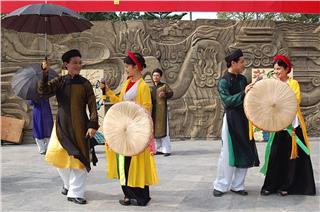
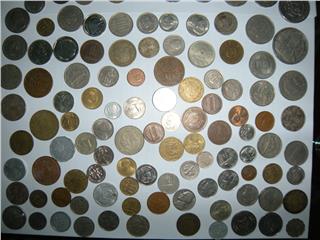
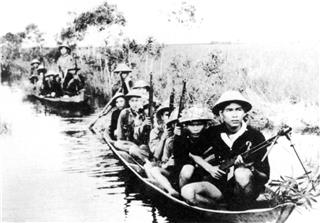
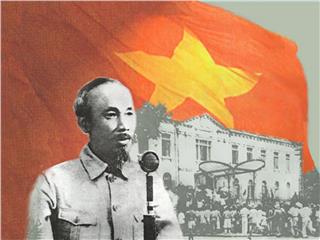
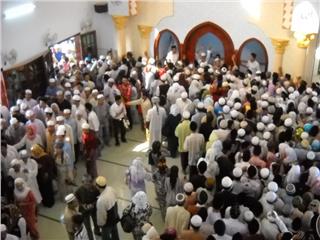

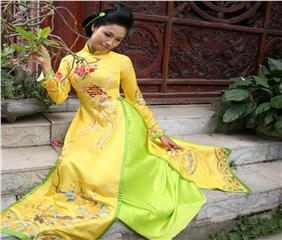
Then singing - a traditional Vietnamese singing genre brings us to mountainous areas with kind-hearted people. Viet Bac people have used “then” songs to express their feelings and wish for a peaceful and well-off life and Tay and Mung ethnic people in Lang Son province are no exception. “Then” melodies can be sweet or exciting and they’re nurtured in this land to stay for good.
When “Then” singing came into being isn’t known for sure but it has definitely become an indispensable singing genre in spiritual life and daily activities of Tay, Nung and Thai people living in Viet Bac. “Then” singing has different colors in different localities, but basically, it shares some common features. It’s the excellent combination of music, dance, song, fine art, literature, language, spiritual life, tradition and custom. The singing genre is an overview of the outlook, ideas, feeling and whishes of Tay, Nung and Thai people.
“Then” literally means “thien” – the heaven. “Then” singing is believed to be the fairy singing. So, it was used in solemn events of ancient Tay people like ceremonies of praying for peace, bumper crops or summoning spirit to pray to the Heaven. “Then” singers are messengers of the God and they’re thought to be able to send people’s wishes to the God. Each “Then” artisan is a living treasure of folk art.
Tay and Nung ethnic people use “Then” singing to ask for good luck and drive all bad luck away. They invite “Then” singers to their houses in almost all occasions. “Then” has become one of their typical beliefs. They believe that the Heaven has three layers. When people play the “dan tinh” (traditional musical instrument) and sing “Then” songs, “Then” male singer begins his journey with spiritual military leaders and soldiers through the Heaven layers.
When listening to “Then” songs, people know where the troop is. The songs describe typical features of each layer of the Heaven. That’s why “Then” singers, either male or female, are said to be able to communicate with the supernatural. Like “hau dong” (trance rituals) of Vietnamese people, “Then” singing of Tay and Nung people use music, songs and a percussion instrument called “chum xoc nhac” to lead to the place of the God to ask for something or say thanks to him.
“Then” songs are sung to lead people in their journey to different realms for different purposes. In rituals, “Then” songs are written systematically. People often sing these songs in small spaces like in front of the altar. Different “Then” melodies are combined with accompaniment moves that present the determination of spirit military leaders and soldiers and make the singing genre become a sacred one. And people keep singing to show their sentiments. All “Then” songs, either worshipping or festival songs are sung with the sound of a musical instrument called “dan tinh” and a percussion instrument named “bo xoc nhac” or “bo ngua”. People know the level of a singer by looking at his/her percussion instrument.
“Then” singing can be compared to an epic collection. Each epic has different chapters with different singing styles and attractiveness. It’s necessary to watch and listen to “Then” singers carry out rituals to see how talented they are. They’re like actors who star many characters at the same time. “Then” singers sing and show different facial expressions. There are two kinds of “Then” singing in Lang Son, namely “Then Tay” and “Then Nung”. Each ethnic group has their own way to perform this singing genre.
This is a ceremony to ward off bad luck of Tay people. “Then” artisan Nong Thi Lim is the main organizer of the ceremony. Other singers follow her while holding percussion instruments. Worshipping “Then” is said to be an indispensable part in the spiritual life of Tay people. “Then” singing is performed with all required rituals in the most solemn place in a house, i.e. in front of the altar. People sing different chapters of a “Then” song in turn. A ceremony lasts from one night to several nights, depending on the host’s demand.
Worshipping “Then” songs are those used in worshipping rituals. When spring comes, Tay and Nung people hold “Then” singing festivals. Sweet “Then” melodies and the pleasant sounds of the “dan tinh” give the whole area a breath of fresh air and inspire locals to love “Then” singing even more. The singing genre seemed to fall into oblivion at some time in the past, but now, it’s revitalized by its lovers.
“Then” songs have been handed down from generation to generation. Local people earn their living there with these songs. “Then” singing is similar to a spiritual food for people in the Northern mountainous area. However, people in different localities have their own melodies. “Then” singing connects people in Viet Bac, i.e. provinces from Cao Bang to Bac Kan and from Tuyen Quang to Lang Son. It has become part of local people’s soul and can be heard in classes for people of all ages in urban or rural areas. “Then” classes are opened where people love it.
The connection between “Then” singing and the life of mountainous people here becomes stronger and stronger. It’s like a constant flow. Both senior singers and children who have begun learning how to play the “dan tinh” love the melodies of their homeland, which truly express their heart.
Source: VTC10 - NETVIET

 Đặt vé máy bay cho người Việt?
Bấm vào đây
Đặt vé máy bay cho người Việt?
Bấm vào đây
Our service uses cookies for technical, analytical and marketing purposes. See our Cookie và Privacy policies for more information. If you agree to this, just keep browsing.


